

Scrolls
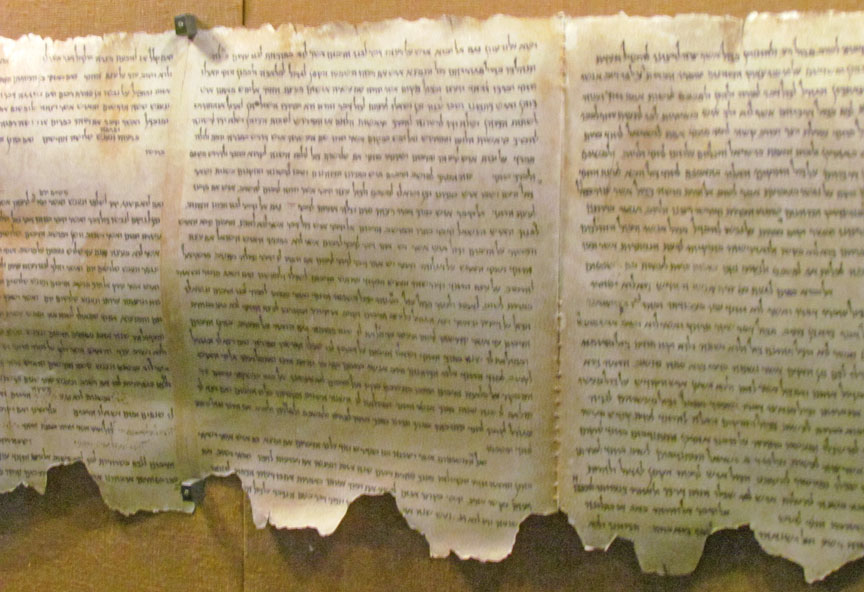
Dead Sea Scroll
The Qumran Caves are a series of caves, some natural, some artificial, to be found around the archaeological site of Qumran. It is in a number of these caves that the famous Dead Sea Scrolls were found. The limestone cliffs above Qumran contain numerous caves that have been used over the millennia: the first traces of occupation are from the Chalcolithic period then onward to the Arab period. The artificial caves relate to the period of the settlement at Qumran and were cut into the marl bluffs of the terrace on which Qumran sits.

In early 1947 or perhaps the previous year a Bedouin boy of the Ta'amireh tribe,
Muhammid Ahmed el-Hamed called edh-Dhib (the wolf), found a cave after searching
for a lost animal. He had stumbled onto the first cave containing scrolls from
two thousand years ago. More Ta'amireh visited the cave and scrolls were taken
back to their encampment. They were eventually shown to Mar Samuel of the
Monastery of Saint Mark in April 1947 and the discovery of the Dead Sea Scrolls
was made known. The location of the cave was not revealed for another 18 months,
but eventually a joint investigation of the cave site was led by Roland de Vaux
and Gerald Lankester Harding.

The interest in the scrolls with the hope of money from their sale initiated a
long area-wide search by the Ta'amireh to find more such scrolls, the first
result of which was the discovery of four caves in Wadi Murabba'at about 15
kilometers south of Qumran in 1951. In the Qumran area another cave was
discovered, now referred to as Cave 2Q (1Q was the first scroll bearing cave),
in February 1952. However, only a few fragments were found in the cave. Fear of
the destruction of archaeological evidence with the discovery of caves by the
Bedouin led to a campaign by the French and American Schools to explore all
other caves to find any remaining scrolls. Although 230 natural caves, crevices
and other possible hiding places were examined in an 8 kilometer area along the
cliffs near Qumran, only 40 contained any artifacts and one alone, 3Q, produced
texts, the most unique being the Copper Scroll.
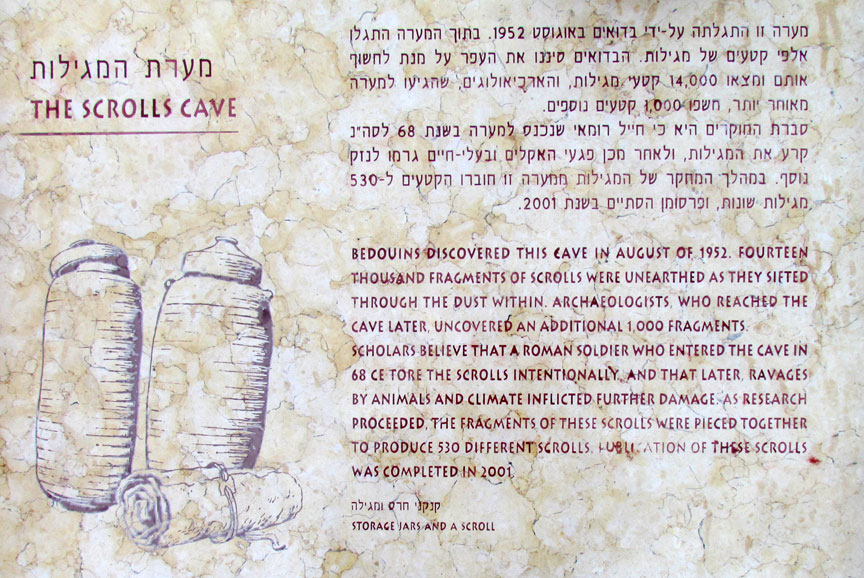
4Q was discovered in September 1952 by the Ta'amireh. De Vaux, on being offered
a vast amount of fragments, contacted Harding who drove the Qumran site to find
that the Bedouin had discovered caves very near the Qumran ruins. These were
Caves 4Q, 5Q, and 6Q, the most important of which was 4Q which originally
contained around three-quarters of all the scrolls found in the immediate Qumran
area. The first two of these caves had been cut into the marl terrace. The third
was at the entrance to the Qumran Gorge just below the aqueduct.
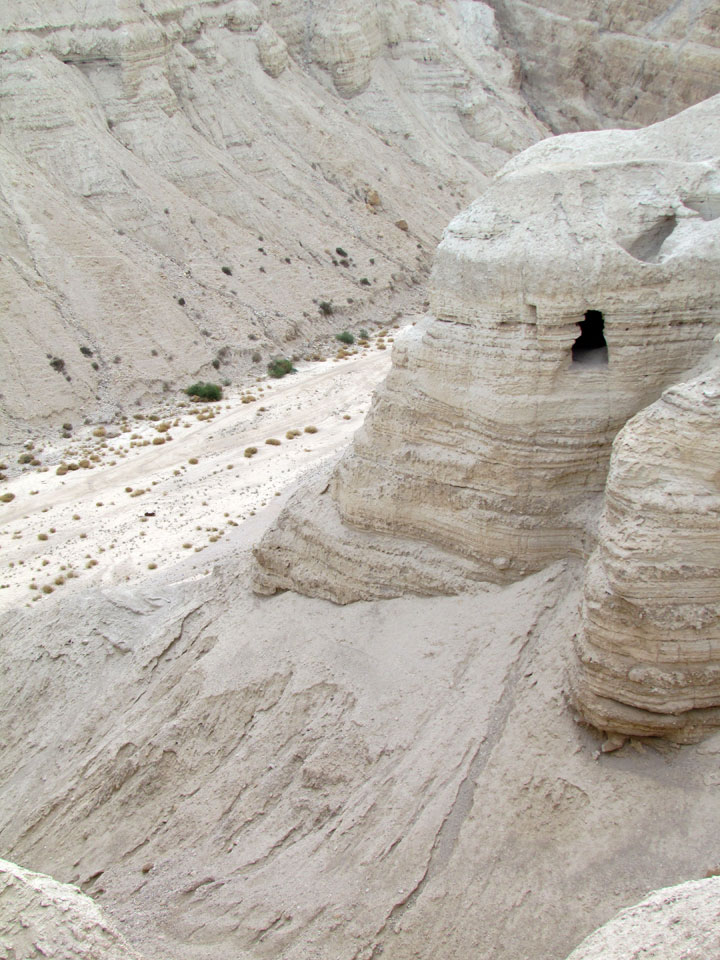
In 1955 a survey of the terrace brought to light a staircase leading down to the
remains of three more artificial caves, 7Q, 8Q and 9Q at the end of the Qumran
esplanade, all of which had collapsed and had been eroded, and a fourth cave,
10Q, on the outcrop which housed Caves 4Q & 5Q.

The last cave containing scrolls to be found, once again by the Ta'amireh, was
11Q. Among its contents was the Temple Scroll, though it had been spirited away
and its recovery was to prove long and complex.
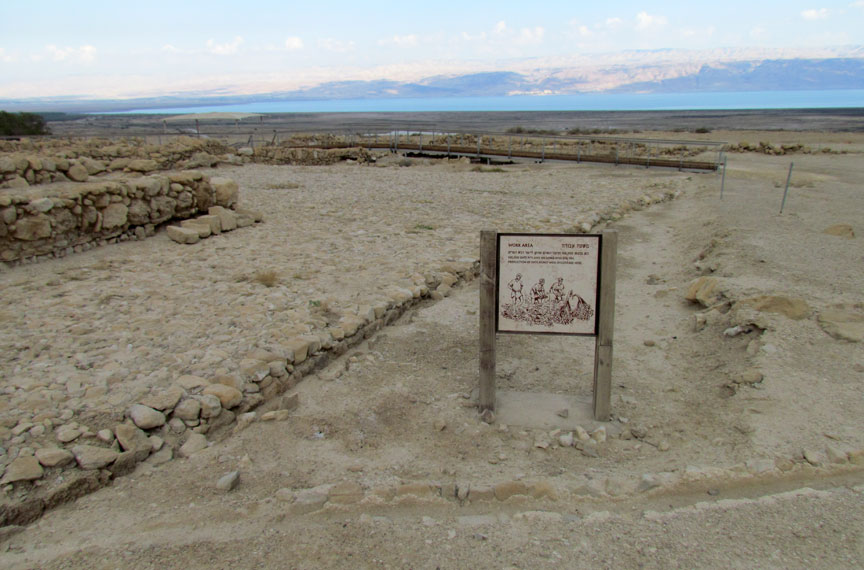
site of earlier inhabitation
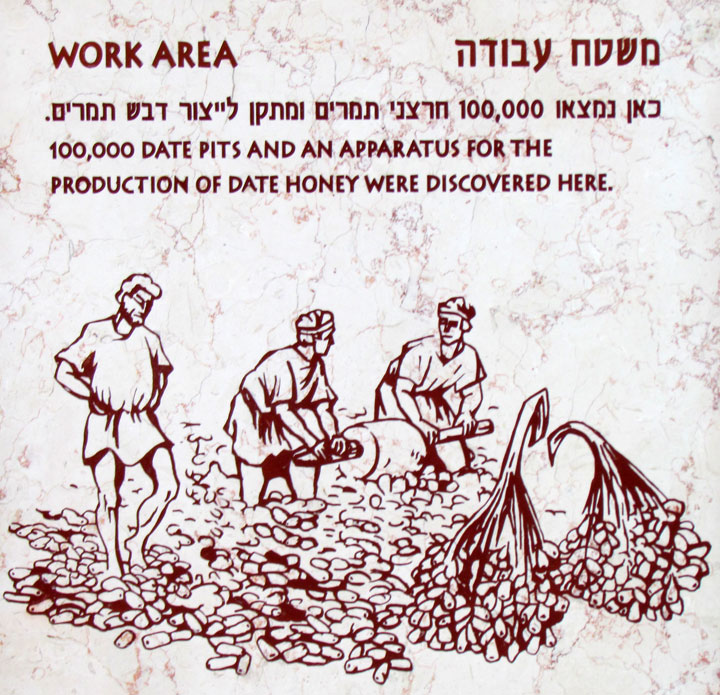
In all there are ten marl cut caves in the near vicinity of Qumran: 4Qa, 4Qb,
5Q, 7Q, 8Q, 9Q, 10Q, an oval cave west of 5Q, and two caves to the north in a
separate ravine. Their location necessitates a direct connection with the
Qumran settlement. The three caves at the end of the esplanade could only be
accessed via the settlement. These caves are thought to have been cut for
storage and habitation. Marl is a soft stone and makes excavation relatively
easy, but as seen with Caves 7Q - 9Q they haven't survived well.
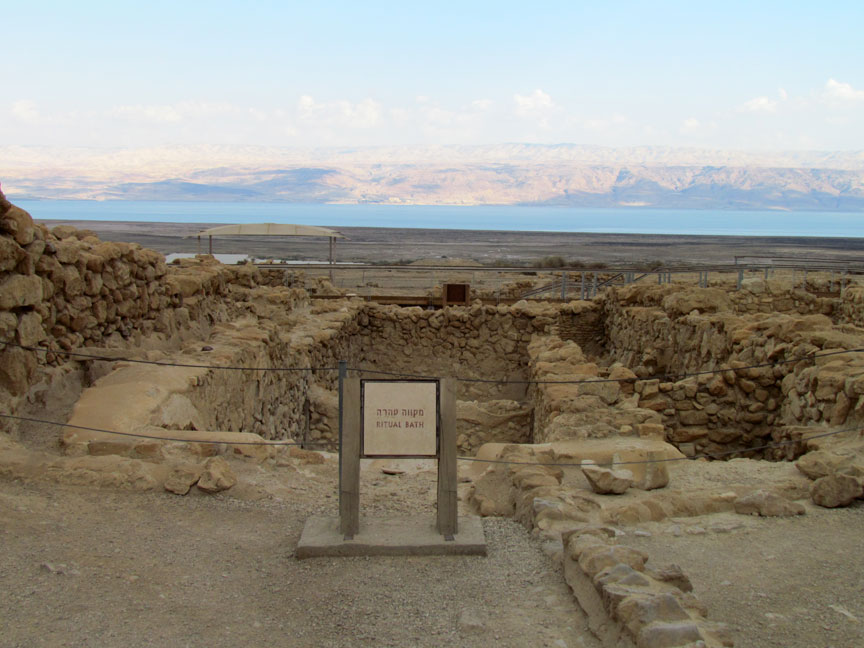
ritual bath
4Q, which is now visible from the Qumran esplanade, is actually two caves, one
adjacent to the other. De Vaux referred to them as 4a and 4b. When the Ta'amireh
removed all the fragments they could before Harding's arrival, there was no way
to tell which scrolls belonged to which cave, so they were later all catalogued
simply as from 4Q. In excavating the caves hundreds of fragments were still to
be found in 4a while only two or three fragments in 4b. 4a was 8m long and 3.25
m wide with tapering walls reaching 3m in height, all cut by hand.
Text from Wikipedia

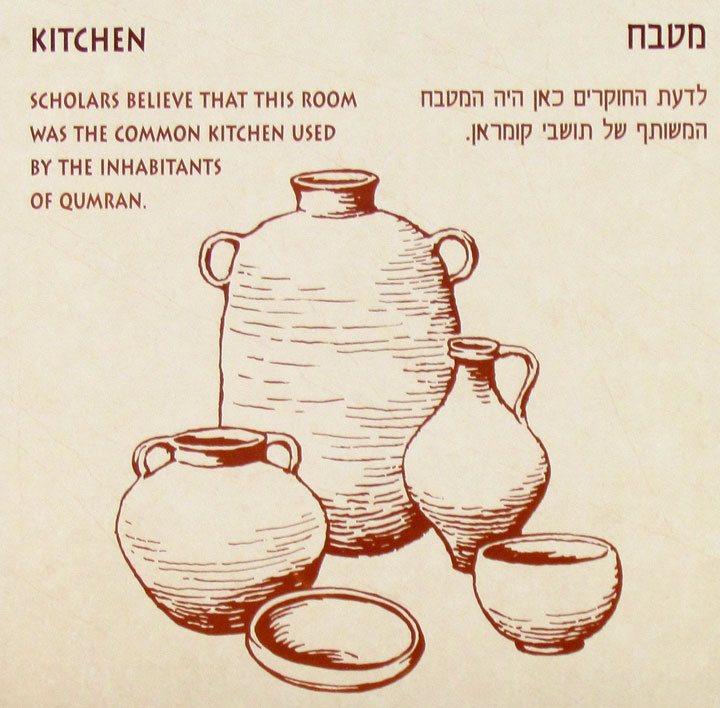
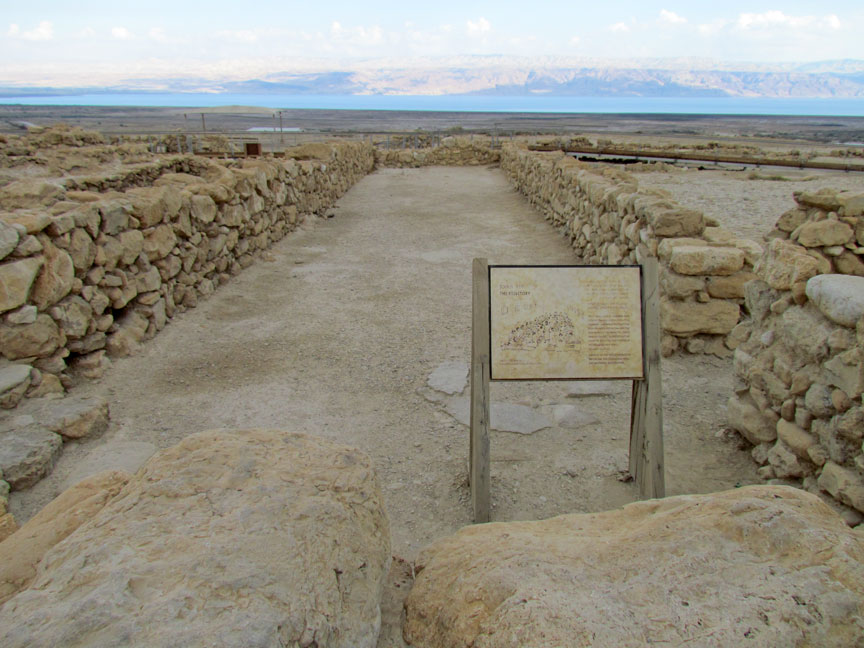
refectory
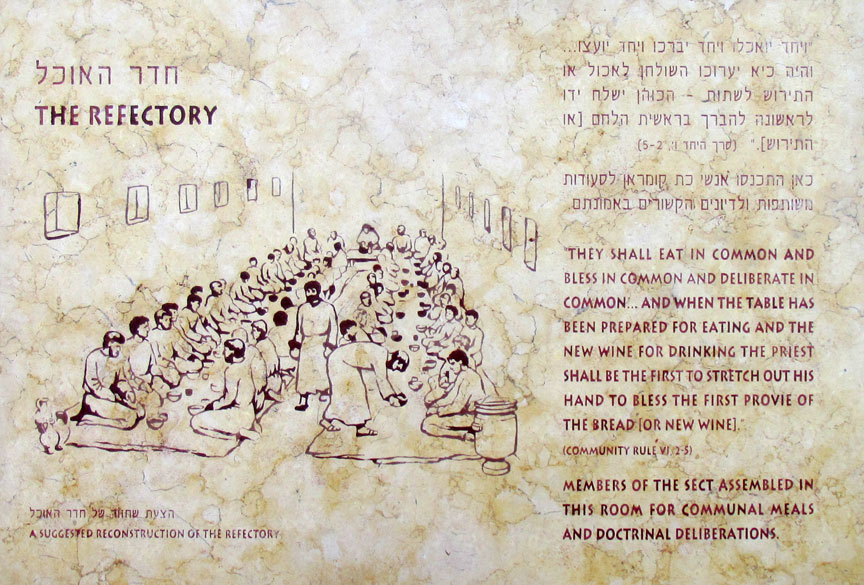
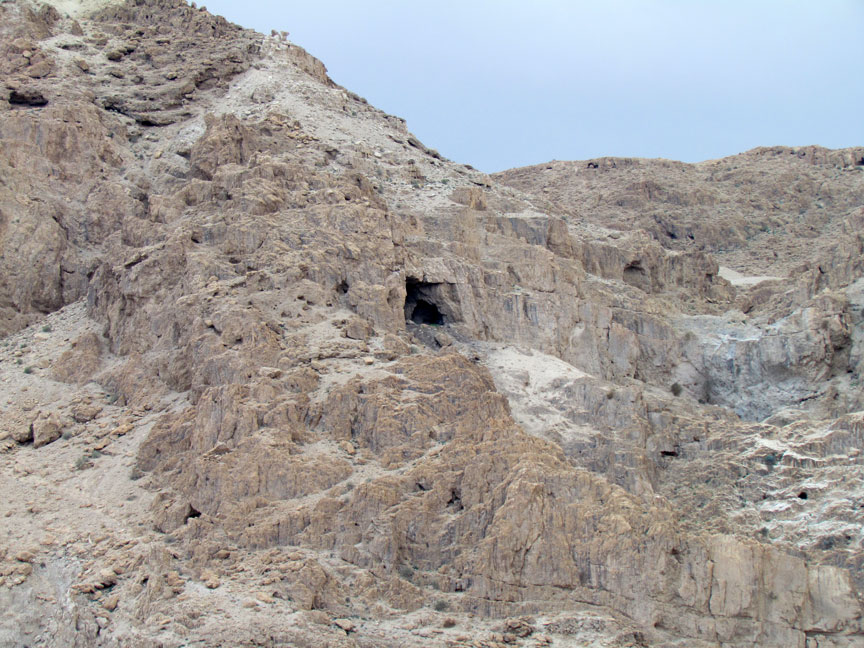
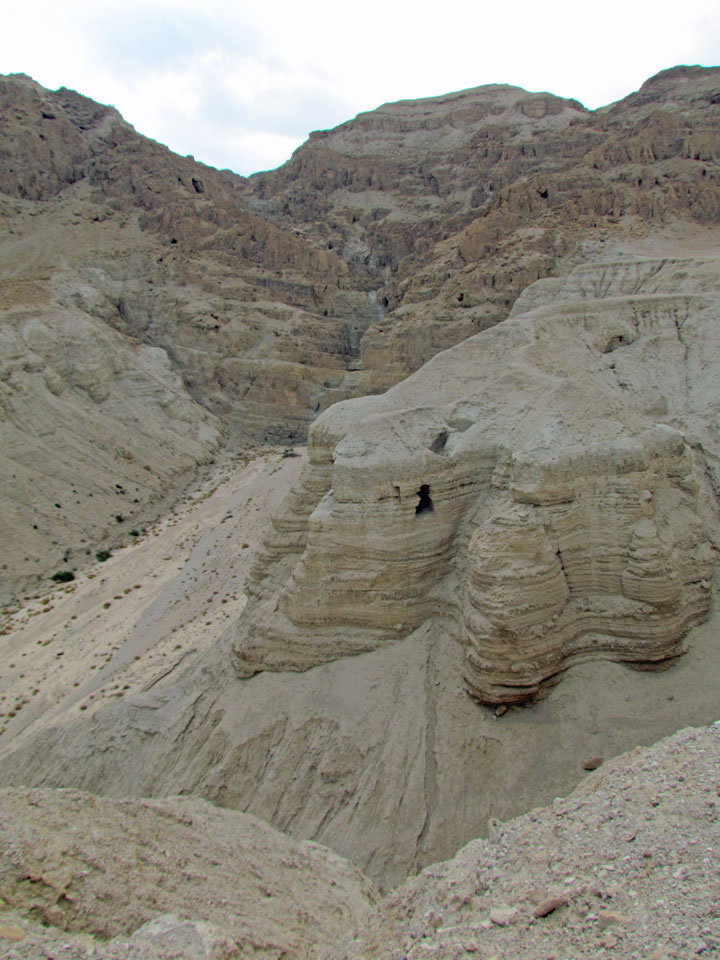
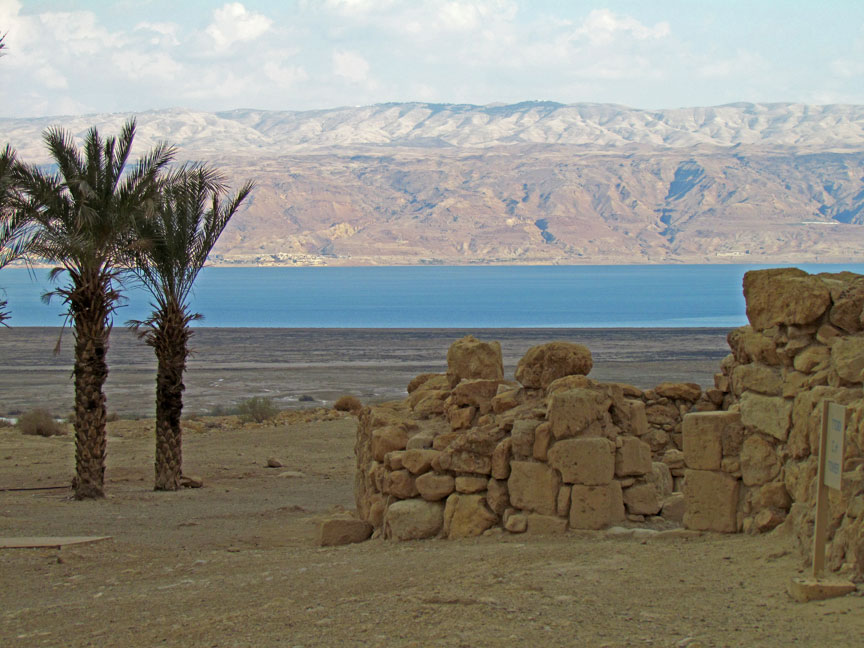
near the Dead Sea